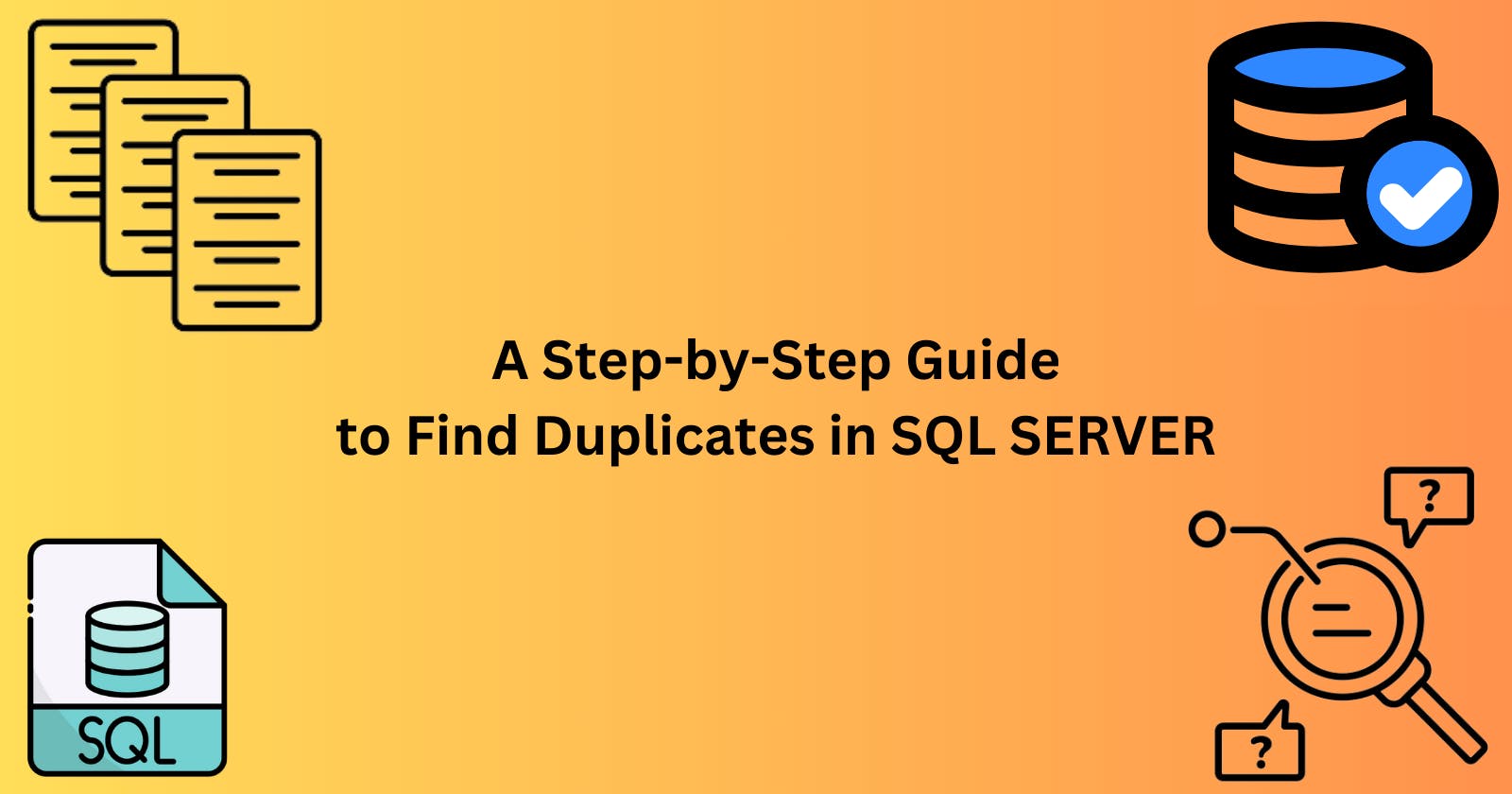Hi techies in this article we would see what are the different ways in which we would find duplicates in SQL SERVER
1) Identify the Columns to Check for Duplicates The first step is to determine which columns you want to check for duplicates. These are usually the key columns or a combination of columns that should be unique.
2) Use the GROUP BY Clause with HAVING Condition One way to find duplicates is to use the GROUP BY clause along with the HAVING condition. This approach groups the records by the columns you want to check for duplicates and then filters the groups that have more than one record.
SELECT column1, column2, ..., COUNT(*) AS Duplicates
FROM YourTableName
GROUP BY column1, column2, ...
HAVING COUNT(*) > 1;
3)Use the INTERSECT Operator Another approach is to use the INTERSECT operator to find the intersection of records between the original table and a derived table with distinct values.
SELECT column1, column2, ...
FROM YourTableName
INTERSECT
SELECT column1, column2, ...
FROM (
SELECT DISTINCT column1, column2, ...
FROM YourTableName
) AS DistinctTable;
This query first creates a derived table with distinct values, and then the INTERSECT operator finds the records that exist in both the original table and the derived table with distinct values, effectively giving you the duplicates.
4) Use the ROW_NUMBER() Function The ROW_NUMBER() function can also be used to identify duplicates by assigning a row number to each record within a partition defined by the columns you're checking for duplicates.
5) Use Temporary Tables (Optional) If you need to perform further operations on the duplicate records, you can store them in a temporary table for easier manipulation.
SELECT column1, column2, ...
INTO #TempTable
FROM (
-- Use any of the above queries to find duplicates
);
Replace the subquery with the appropriate query from the previous steps to find the duplicates. The results will be stored in the temporary table #TempTable.
Remember to replace YourTableName with the actual name of your table, and column1, column2, etc., with the column names you want to check for duplicates.

